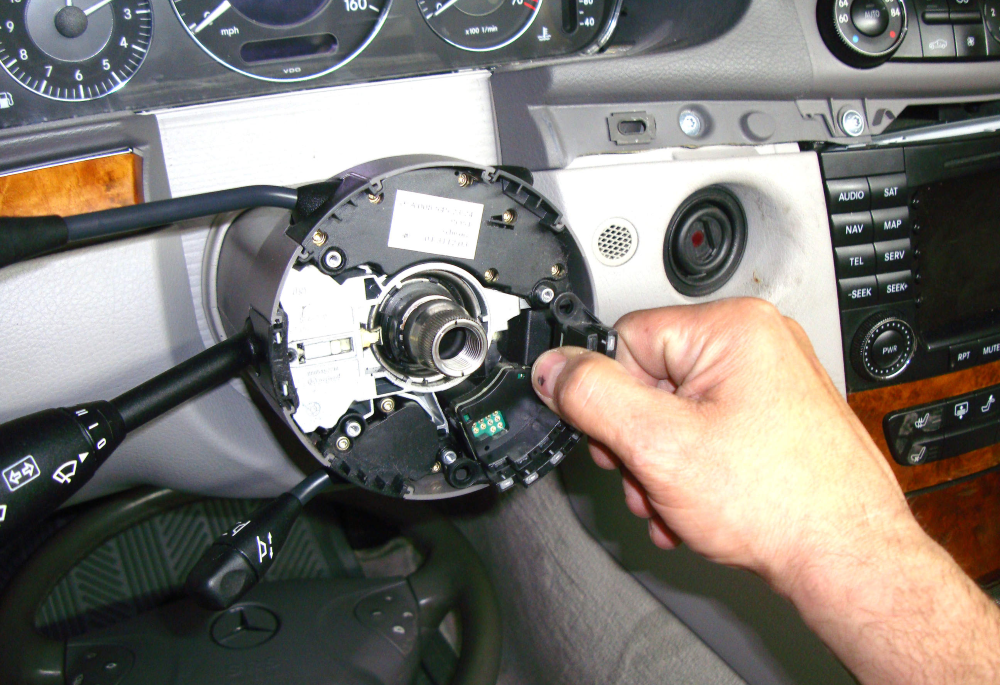What’s a Steering Angle Sensor Actually Do?

If you’ve ever had that weird light pop up on your dash while heading down Victoria Street or crawling through the traffic past The Base, it might have something to do with your steering angle sensor (SAS). This little device sits in your steering column and basically tells your car’s computer exactly what angle you’ve got the steering wheel pointed at, plus how quickly you’re turning it. That info’s vital for all the fancy stability systems (like ESC) and traction control – pretty important stuff, especially with all the potholes and sudden stops around Hamilton East and Hillcrest!
Older vehicles like a 2005 Daihatsu Sirion or Suzuki Swift had more basic (analog) sensors that worked with simple voltages, but these days, Euro and Asian models – think your VW Golf, Skoda Fabia, Hyundai Ioniq or those Toyota Estima hybrids – are packing digital sensors that use LEDs and send data straight to the car’s brain.
Most of the time, you’ll never have to think about your SAS – it’s designed to last as long as the car will. But, like anything on New Zealand’s dodgy roads and with all our speed bumps and curb hits (cheers, Dinsdale!), they do sometimes fail. If yours is dodgy, you’ll know about it – and it’s not something you want to ignore.
Read more details about steering angle sensors here >
Why Do Steering Angle Sensors Play Up?
Needing calibration – If you’ve had a wheel alignment, replaced suspension bits, or even just copped a big bump heading out towards Cambridge, your car probably needs the steering angle sensor re-calibrated. If not, it feeds rubbish info to your ABS and traction systems.
Buggered wiring – Cables wear out or get damaged, especially with all the movement inside the steering column. Seen it plenty on older Subarus and the odd Mercedes-Benz A-Class too.
Old age and wear – Like any sensor, they just get tired over time. Bit of heat, bit of moisture tracking in over years of Waikato winters, and suddenly you’ve got problems.
Common Signs Your Steering Angle Sensor’s Had It
- Traction control or ESC light on – Very common after a hard jolt over that sneaky speed bump in Rototuna. Your car’s picked up something off and wants you to fix it before she’ll play nice.
Check out local traction control light diagnostics > - Steering just feels off – This pops up a bit in the workshop. Someone’s Mazda CX-5 or Honda Jazz comes in because the steering’s gone vague or loose. Not dangerous, but definitely not normal.
- Pulls or drifts to one side – Especially noticeable if you live out near Ngaruawahia or Tamahere and do a lot of open road. Car can’t tell which way you’re pointing, so it wanders.
- Traction control playing up – Sudden, weird traction control kicking in when you’re just cruising. Usually a dead giveaway it’s getting the wrong steering angle data.
If you spot any of this, best to get it checked. Hamilton roads aren’t the kindest, and you don’t want to put yourself at risk.
Is It Safe to Drive With a Faulty Steering Angle Sensor?
Short answer: nah, not really. Maybe you can limp home if you’re just down the road in Glenview or Te Kowhai, but if you’re getting dodgy warning lights or the car feels floppy, better to park it and call us. The steering angle sensor backs up your stability control and ABS – with this not working right, you’re risking unpredictable handling, dodgy braking, and traction problems. Frankly, you don’t want to find out the hard way coming off the expressway in a downpour or icy winter morning!
If you have to drive, take it easy—slow corners, avoid heavy braking, and don’t push your luck with the Hamilton weather. But best option is to get it sorted ASAP.
SAS Calibration & Repairs in Hamilton
Need a steering angle sensor checked, calibrated or swapped out? We’ve sorted this problem countless times for locals from Morrinsville to Raglan and everywhere in between. One of our techs will run a quick scan, sort out a recalibration, or fit a fresh sensor if yours is stuffed. It’s all about keeping you safe and getting you back on the road, whether you’re off to work or the Lakes.
If you need reliable car service Hamilton wide – WOF, hybrid repair, or SAS calibration – just give Grimmer Motors a bell and we’ll get you sorted fast.

